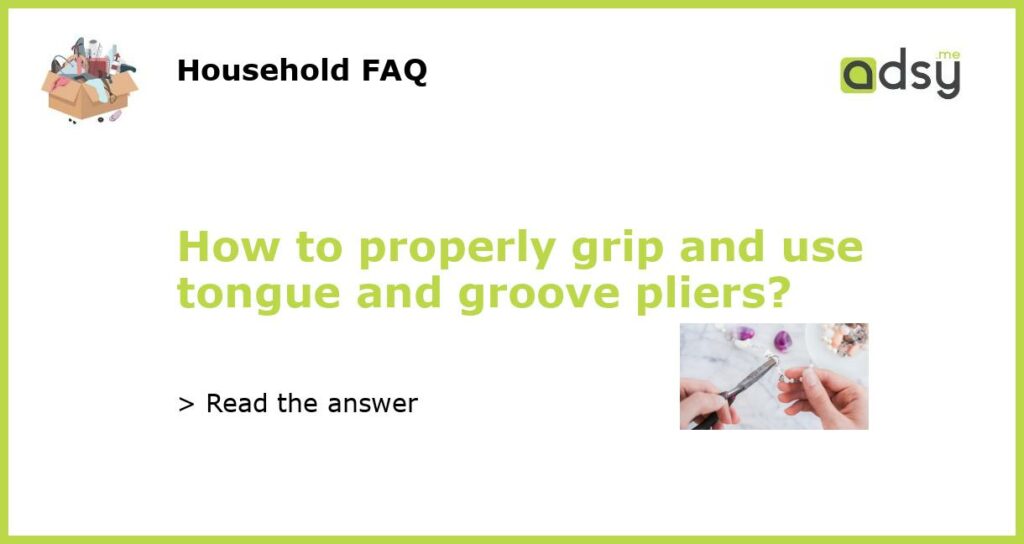Understanding the Basics of Tongue and Groove Pliers
Tongue and groove pliers are versatile tools that are commonly used for gripping and manipulating objects. They are particularly useful for plumbing and electrical tasks, as well as for general home repairs. However, to use these pliers effectively, it is important to know how to grip and use them properly. In this article, we will discuss the basics of tongue and groove pliers and provide some tips for using them effectively.
Choosing the Right Size and Type of Pliers
Before using tongue and groove pliers, it is essential to select the right size and type for the task at hand. Tongue and groove pliers come in various sizes, typically measured by the length of the handles and the maximum opening of the jaws. It is important to choose pliers that are the right size for the task, as using pliers that are too small or too large can make it difficult to grip objects properly.
In addition to size, there are different types of tongue and groove pliers available, such as straight jaw and curved jaw pliers. Straight jaw pliers have a flat jaw surface, while curved jaw pliers have a curved surface that conforms to the shape of the object being gripped. The type of pliers to use depends on the specific task and the shape of the object you are working with.
Gripping Objects with Tongue and Groove Pliers
When gripping an object with tongue and groove pliers, it is important to position the jaws correctly to ensure a secure grip. Start by adjusting the pliers to the desired opening size using the adjusting screw or button on the handle. Place the object between the jaws, making sure that they are aligned properly. The object should be gripped securely, but not so tightly that it is damaged or crushed.
To enhance the grip, it can be helpful to use the right angle technique. This involves slightly angling the pliers inwards towards the object being gripped. This helps distribute the force evenly across the jaws and provides a more secure grip on the object.
Using Tongue and Groove Pliers to Turn and Twist Objects
In addition to gripping, tongue and groove pliers can also be used to turn and twist objects. To turn an object, such as a nut or bolt, place the jaws of the pliers around it and adjust the grip so that it is secure. Apply force to the handle in the opposite direction of the desired rotation. The teeth on the jaws of the pliers will grip the object, allowing you to turn it.
To twist an object, such as a pipe or fitting, place the jaws of the pliers around it and adjust the grip so that it is secure. Apply force to the handle in the desired direction of the twist. The teeth on the jaws of the pliers will grip the object, allowing you to twist it.
Additional Tips for Using Tongue and Groove Pliers
Here are a few additional tips to keep in mind when using tongue and groove pliers:
- Always use pliers that are in good condition and free from damage. Damaged pliers can affect their grip and performance.
- Do not use tongue and groove pliers on objects that are too small or fragile, as they may be damaged or crushed.
- Wear safety gloves to protect your hands when using tongue and groove pliers, particularly if you are applying a significant amount of force.
- Practice proper hand positioning and grip techniques to ensure maximum control and comfort when using the pliers.
- Store tongue and groove pliers in a dry and clean environment to prevent rust and corrosion.
By understanding the basics of tongue and groove pliers and following these tips, you can effectively grip and use these versatile tools for a wide range of tasks.






